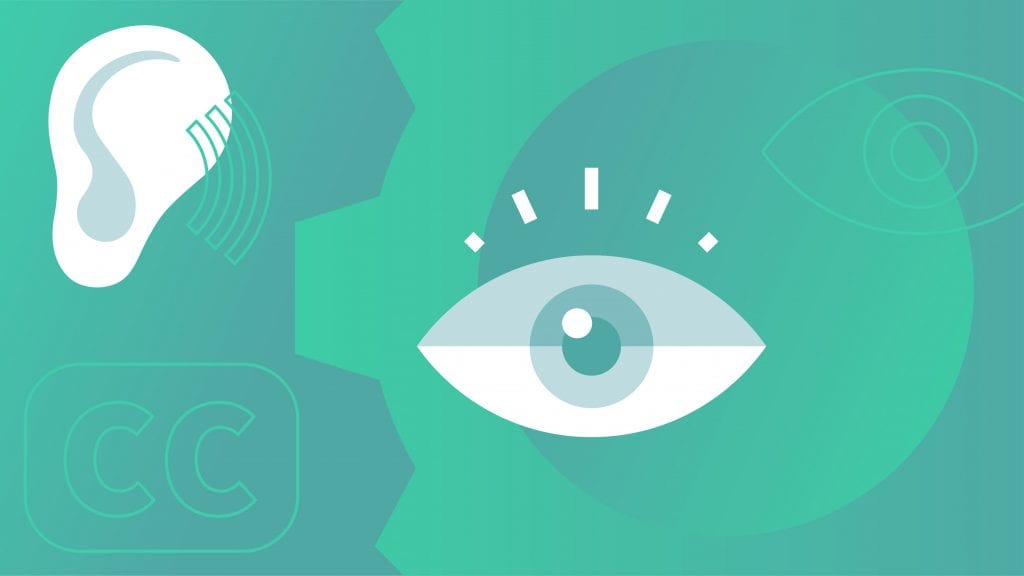5 Ways to Make Your Virtual Event More Accessible
If you're hosting a virtual event, you want your entire audience to participate. Learn how to make your virtual events more accessible.

COVID-19 made it possible for many of us to attend virtual events around the world. As many of us found our calendars filled with online events, we also discovered that not everyone had the same opportunity to participate.
Even if people with disabilities could access online meetings and events, they couldn’t all take part in the same way they would in person. After a year of video conferencing, it’s clear that ensuring accessibility is a crucial part of online event planning. Still, many hosts might not know where to start.
Here’s everything you need to know to make your virtual event more inclusive and accessible.
What is Accessibility and Why Does It Matter?
Accessibility means that you ensure that everyone can reasonably engage and participate with your event. By making events accessible, we aim to fully include all people, including people with disabilities, and reduce discrimination.
Many people without disabilities don’t think about accessibility simply because it doesn’t occur to them. Meanwhile, some of their friends or co-workers may feel left out in the same virtual meeting.
For example, people who are deaf or hard of hearing may not be able to lip-read during a virtual event like they would in person. If sign language interpretation isn’t available, these people could miss out on the entire event.
Someone with a learning disability may have a hard time focusing on a lecture. Written captions help this person keep up with the conversation.
Most hosts want their event to be available to anyone. Yet, they might not think about ensuring accessibility during the planning process. Accessibility looks different for everyone, which can seem daunting for an event planner. Thankfully, making virtual events accessible to people doesn’t have to be hard.
How Captions Improve Accessibility
Adding captions is an easy way to make your virtual meeting more accessible for everybody. Live captions can help people with disabilities engage in your content in a way that works for them.
In the past year, more and more organizations have begun to caption live events. Automatically generated captions can be read aloud by a screen reader or seen on the computer screen in real time. This helps people with visual impairments, people who are deaf or hard of hearing, people with learning disabilities, and non-native speakers to engage with your material.
Captions can even make the event more enjoyable for everyone in the audience. Event-goers can track and remember a conversation, keynote, or presentation more easily. In fact, the University of Iowa discovered that captions help people retain more information.
Five Best Practices to Make Your Live Events Accessible
Whenever you plan an event, accessibility should be a key part of the planning process. Online events are no exception.
Making your content more accessible step by step can even open up a new audience for your events. If people with disabilities feel included in your events, they’re much more likely to attend a future event!
Here are five best practices to help you make your events accessible.
1. Ask Attendees if They Need Accommodations During the Planning Process
One of the best ways to learn what assistance people need is to ask.
Include a section in your registration form for attendees to ask for accommodations. This gives you enough time to fulfill their needs before the event. Once you’ve found the help they need, like sign language interpretation, you can share that as part of your marketing materials to encourage people with disabilities to join your event.
3. Establish a Post-Event Portal with Recordings
Building an online portal for captioned recordings of the sessions from your event helps you get the most value out of your content. Attendees can’t always make it to every session they want to sit in on, so recording them and housing them in one central location allows your audience to return to content they missed. Links to these recordings can also be shared out with participants, as well as those who were unable to attend (more on that in a second!).
Speech-to-text providers like Rev can add captions of all of this recorded content to ensure that it’s accessible and digestible for your audience. Our network of more than 50,000 transcription and caption professionals will add 99 percent accurate captions to all of your video content, saving you time and effort.
4. Send Transcripts with Your Recordings
Many hosts like to send event replays to everyone who signed up after the event is over. Making these replays accessible is just as important as during the event itself!
Even if your videos already have captions, get them transcribed, too. A transcription makes it even easier to follow along with your video. Plus, it gives attendees the option to engage with the plain text format, too.
5. Ask for Feedback
There’s always a way we can make our events more inclusive. Attendees may have some ideas for what you can do differently next time.
Send an email or survey after the event to collect feedback. You may be surprised what you discover!
Include Everyone in Your Next Virtual Event
Even as we discover our “new normal” after COVID-19, it’s not likely that virtual events will disappear anytime soon. Virtual meetings and events have become another way we can engage with our work, our friends, and our wider community. Ensuring accessibility means we can extend that community a bit bigger and welcome in people with disabilities.
At Rev, we’re committed to making virtual events fully accessible for all. Our speech-to-text services, from machine- and human-generated captions to accurate transcripts, can help take your virtual event to the next level. Try Rev today!
Subscribe to The Rev Blog
Sign up to get Rev content delivered straight to your inbox.




